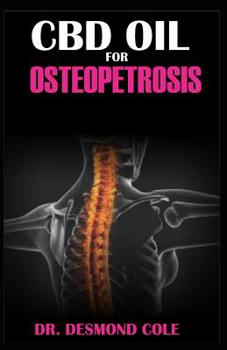CBD Oil for Osteopetrosis
In this disease, the number of osteoclasts may be increased or reduced. As a result, bone formation persists while its resorption fails. This condition gives rise to an excessive bone formation. However, the bone pathology of the sufferers reveals that parathyroid hormones, alkaline phosphatase, calcium and phosphate levels remain unaffected regardless of the severity of disease. The major symptoms of osteopetrosis include anaemia, shortening of bones, stunted growth, deformity of joints, increased likelihood of infections and fractures, bone marrow narrowing due to bone expansion, deafness, blindness and facial paralysis.Recent studies have shown that facial changes and blindness result from the pressure that is exerted by the extra bones on the nerves. As far as the treatment of osteopetrosis is concerned, patients are often prescribed with calcium and vitamin D to treat deformity of joints and stunted growth.In some cases, corticosteroids may prove quite effective to simulate bone resorption. However, the durable cure for osteopetrosis involves bone marrow transplant, which is very expensive and is beyond the reach of an ordinary man. Healthy dietary habits play an important role in maintaining the health of your joints and bones.Not every patient is affected in the same way. Osteopetrosis comprises a clinical spectrum ranging from very mild to severe disease phenotypes that are fatal in the first year of life. Osteopetrosis has for decades been categorized descriptively by its clinical severity and inheritance pattern into a "malignant" autosomal recessive infantile form, a "benign" adult autosomal-dominant form (which can be severe), and an intermediate form. The incidence is variably estimated at 1:200,000 for autosomal-recessive osteopetrosis and 1:20,000 for autosomal-dominant osteopetrosis . Recent molecular and genetic advances have begun to clarify the molecular basis of the disease and now allow the classification of osteopetrosis by its underlying molecular pathogenesis. The identification of specific genetic mutations can yield important prognostic and therapeutic implications. Unfortunately, incomplete penetrance and variable expressivity contribute to the wide phenotypic spectrum that can be seen even within kinships, limiting the ability to correlate the genotype and clinical phenotype.The rarity and heterogeneity of osteopetrosis can present substantial challenges to clinicians. Existing consensus guidelines by the European Society for Immunodeficiencies and the European Society for Blood and Marrow Transplantation Inborn Errors Working Party provide a framework for the diagnosis, treatment, and follow-up of patients with infantile osteopetrosis, but they focus largely on the indications for, approaches to, and complications of hematopoietic cell transplantation (HCT). They notably do not address the very different clinical course and treatment of patients with relatively milder forms of osteopetrosis, which can still be associated with substantial morbidity. Therefore, the objective of this is to provide the collective experience of panel of experts and provide a basis for standardizing the diagnostic approach and medical management of patients with noninfantile forms of osteopetrosis.
Format:Paperback
Language:English
ISBN:1072559595
ISBN13:9781072559597
Release Date:January 1
Publisher:Independently Published
Length:40 Pages
Weight:0.14 lbs.
Dimensions:0.1" x 5.5" x 8.5"
Customer Reviews
0 rating





